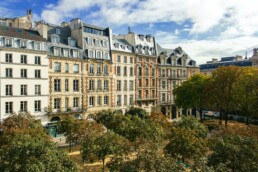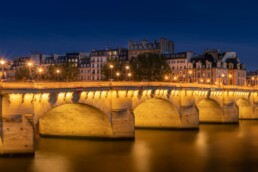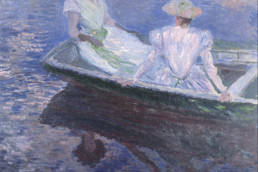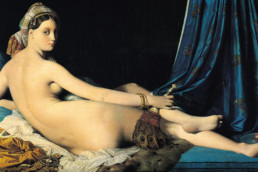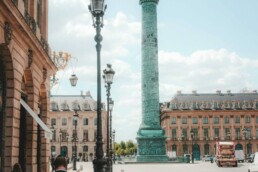On this day in 1873, Claude Monet observes the bustling scene of the Boulevard des Capucines from Félix Nadar’s studio in the heart of Paris. The city, with its incessant tumult, unfolds before his eyes like a vast theater of everyday life. Through the windows, he captures the very essence of modernity, the pulse of the capital that breathes and metamorphoses with every moment.
The Vision of an Imaginative Mind
Armed with his brushes and palette, Monet embarks on the creation of what will become an icon of Impressionism. The Boulevard des Capucines, with its rapid and vibrant strokes, captures an effervescent scene where pedestrians and carriages intermingle in a ceaseless ballet. The artist’s gaze does not seek to freeze the details but to grasp the fleeting impression of the city in motion.
Nadar’s Studio: A Sanctuary of Creation
Félix Nadar’s studio, located at 35 Boulevard des Capucines, becomes a gathering place for the avant-garde artists of the time. It is here that Monet finds refuge and inspiration. In this space, bathed in natural light, he observes the comings and goings of Parisians, each gesture and movement nourishing his creativity.
A famous anecdote tells of a winter day when snow fell on the cobblestones of Paris. Monet stopped in front of the window, captivated by the contrast between the pristine whiteness of the snow and the dark, blurry movement of the crowd below. This fleeting vision inspired him to reproduce this atmosphere in his works, using touches of white and blue to capture the light and shadow.
An Innovative Work
When Monet presents Boulevard des Capucines at the first Impressionist exhibition in 1874, the reactions are mixed. Some spectators, accustomed to precise details and fixed scenes of classical works, are disconcerted by the lack of sharpness. Critics often scorn this revolutionary technique, labeling it “unfinished” and “chaotic.” However, others see in this work a new boldness, a vision that frees painting from its traditional constraints.
Georges Rivière, a writer and art critic, writes about this painting: “Monet offers us here a slice of life, a piece of the Parisian soul. Each brushstroke, each nuance of color, tells the story of a city in perpetual motion.”
Life and Movement
Monet paints Paris not as a static city, but as a living organism, constantly evolving. The blurred silhouettes of passersby, the fleeting shadows of trees, the flashes of light reflecting off building facades—all contribute to creating a sense of dynamism and impermanence. The viewer’s eye is invited to wander across the canvas, to follow the movements of the crowd, to feel the energy that animates every corner of the boulevard.
Parisian Anecdotes
Among the anecdotes related to the creation of this painting is that of a young painter, still unknown, who often stood by Monet, watching with fascination the way he worked. One day, during a break, Monet confided to him: “What I seek is not the reality, but the impression it leaves on me.”
On another day, a group of passersby, intrigued by the attention Monet paid to the street, gathered under the studio window. They looked up, trying to understand what captivated the artist so much. Amused by their curiosity, Monet waved to them, inviting them to share, if only for a moment, his unique perspective on the world.
The Legacy of Boulevard des Capucines
Today, the painting Boulevard des Capucines is housed at the State Hermitage Museum in Saint Petersburg. It remains a vibrant testament to the Impressionist era and Monet’s innovative vision. Through this work, Monet reminds us that art is a perpetual quest for new perspectives, an endless journey in search of beauty in ephemeral things.
Thus, Monet’s Boulevard des Capucines is not just a painting; it is an open window onto Parisian life, an invitation to see the city with new eyes, to perceive the extraordinary in the ordinary.
Lire également :
18 November 2024
Au Consulat: The Soul of Montmartre Through the Ages
11 November 2024
The Conciergerie of Paris
5 November 2024
The History of Place Dauphine: A Parisian Evocation
5 November 2024
The History of the Pont Neuf: A Parisian Reminiscence
23 May 2019
On the Boat by Claude Mone
21 January 2017
An Odalisque at the Louvre
21 January 2017






